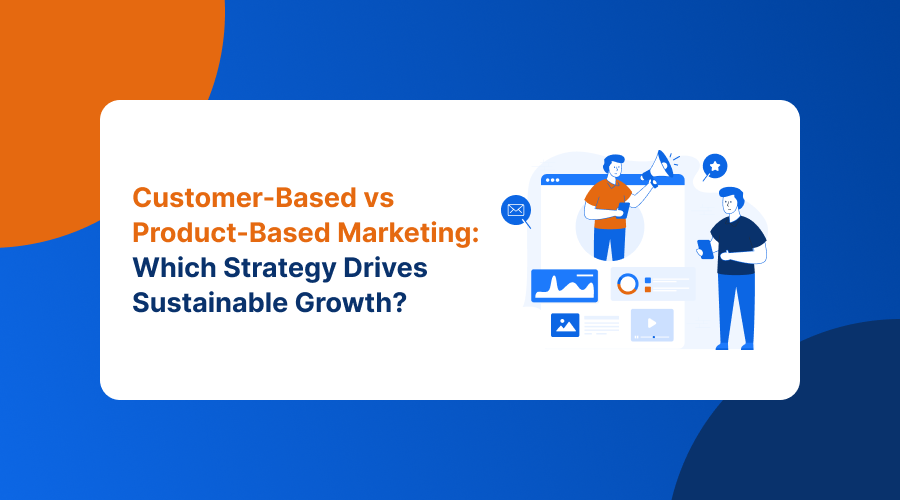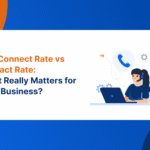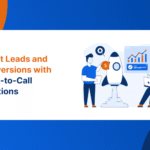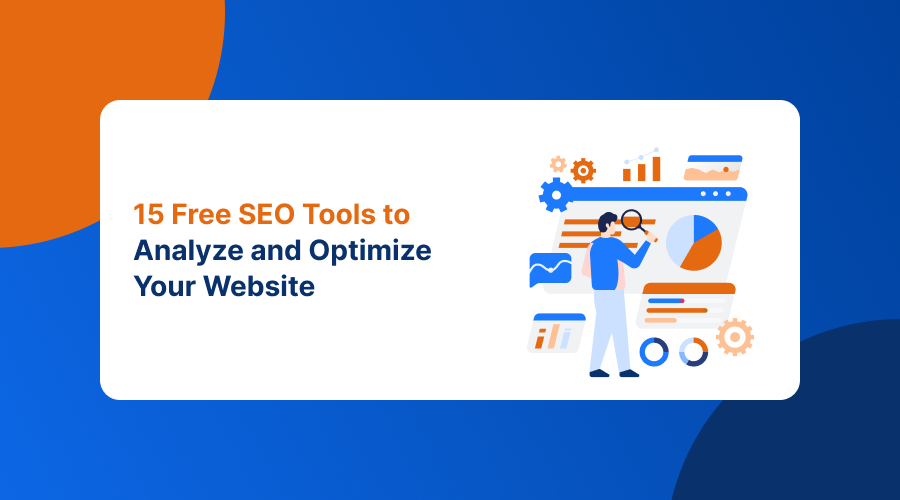Every successful business faces a fundamental question:
Should we focus on perfecting our product or understanding our customer first?
This is where the two dominant marketing philosophies—Product-Based Marketing and Customer-Based Marketing—come into play.
In simple terms, product-based marketing revolves around showcasing the product’s innovation, quality, and features. Customer-based marketing, on the other hand, centers around understanding and solving customer needs through personalized experiences and relationships.
While both have their merits, the real secret to long-term success lies in understanding when to prioritize each—or how to blend them effectively.
Let’s explore both approaches, their strengths and weaknesses, and how they impact your business strategy, SEO, and growth.
1. What Is Product-Based Marketing?
Product-Based Marketing (also known as Product-Driven Marketing) is built on the belief that if your product is exceptional, customers will naturally be drawn to it.
Here, the spotlight is on what you sell, not necessarily who you sell it to.
Core Characteristics:
- Heavy focus on product features, specifications, and innovation
- Marketing campaigns revolve around launches, updates, and versions
- Decision-making is driven by product roadmaps and R&D priorities
- Messaging highlights technical superiority and performance
- Success is often measured in units sold, adoption rate, and feature usage
This approach works best for companies with groundbreaking technologies or unique offerings—where the product itself is the differentiator. However, in today’s customer-first world, relying solely on product excellence can limit long-term engagement.
2. What Is Customer-Based Marketing?
Customer-Based Marketing (also known as Customer-Centric Marketing) flips the focus. Instead of starting from the product, this approach begins with the customer’s journey, needs, and emotions.
The goal is to create meaningful relationships that drive loyalty, advocacy, and sustained revenue.
Core Characteristics:
- Deep understanding of customer pain points and desires
- Personalized experiences and segmented messaging
- Focus on retention, loyalty, and lifetime value (LTV)
- Continuous feedback loops guiding decisions
- Alignment between marketing, product, and customer success teams
3.
Key Differences Between Product-Based and Customer-Based Marketing
| Dimension | Product-Based Marketing | Customer-Based Marketing |
|---|---|---|
| Primary Focus | Product features and innovation | Customer needs and satisfaction |
| Goal | Market share, product adoption | Retention, advocacy, LTV |
| Decision Drivers | Internal vision, R&D insights | Customer feedback, data, and behavior |
| Approach to Growth | Acquisition-heavy | Retention and expansion focused |
| Feedback Loop | Periodic or limited | Continuous and data-driven |
| Core Message | “Our product is the best.” | “We understand your needs.” |
Mindset Difference
A product-driven company says: “We’ve built the best product—customers will see its value.”
A customer-driven company says: “We’ve built the right solution because we understand our customers.
Both mindsets can work—but their effectiveness depends on the stage of your business and your market maturity.
4. Pros and Cons of Each Approach
Advantages of Product-Based Marketing
- Strong Differentiation: Unique features make your brand stand out.
- Clear Vision: Internal alignment around innovation and performance.
- High Scalability: Once the product is perfected, it can scale rapidly.
- Brand Authority: Builds credibility in industries where product quality is king.
Risks of Product-Based Marketing
- Disconnect from Market Needs: You might build features no one uses.
- Low Retention: Without engagement, even great products face churn.
- Slow Adaptation: Lack of feedback may delay response to customer pain points.
- High Cost of Innovation: Heavy investment without guaranteed demand.
Advantages of Customer-Based Marketing
- Higher Retention & Loyalty: Customers stay longer when they feel valued.
- Word-of-Mouth Growth: Happy customers become brand advocates.
- Better Market Fit: Feedback ensures product relevance.
- Sustainable Revenue: Focus on LTV builds long-term stability.
Risks of Customer-Based Marketing
- Over-Customization: Risk of trying to please every segment.
- Complex Decision-Making: Too much feedback can slow innovation.
- High Resource Needs: Requires data, research, and personalized campaigns.
- Potential Lack of Vision: May focus too narrowly on existing users.
5. When to Use Each Approach (or a Hybrid Model)
- Early-stage or innovative startups:
A product-driven approach can help launch disruptive products and capture attention. - Established businesses in competitive markets:
A customer-centric approach builds retention and loyalty for long-term stability. - SaaS or subscription-based models:
A hybrid approach works best—lead with product innovation, but build retention through personalized experiences.
The most successful companies balance both: Product excellence attracts; customer centricity retains.
6.
How to Transition from Product-Based to Customer-Based Marketing
Making this shift requires cultural and structural change. Here’s how to begin:
- Get Leadership Buy-In: Customer centricity must be a top-down commitment.
- Build Feedback Systems: Collect insights via surveys, reviews, and user data.
- Align Teams Across Departments: Marketing, product, and customer success should share KPIs.
- Redefine Success Metrics: Move from “features launched” to “retention improved.”
- Implement Personalization: Use behavioral data to tailor messages and offers.
- Encourage Two-Way Communication: Build customer communities and loyalty programs.
- Iterate Continuously: Use customer feedback to refine both marketing and product decisions.
7. SEO and Content Strategy for Each Approach
Your marketing philosophy also affects your SEO and content roadmap.
For Product-Based Marketing
- Feature-Focused Pages: Create dedicated landing pages for every major feature.
- Product Comparison Blogs: “Our product vs competitors” articles to highlight strengths.
- Technical Deep Dives: Whitepapers, demos, and product breakdowns.
- Keyword Strategy: Target transactional and product-intent keywords like “best CRM software,” “AI automation tool,” etc.
- Content Pillars: Build topic clusters around your product categories or features.
For Customer-Based Marketing
- Problem-Solving Content: Write guides, how-tos, and solution-based blogs around user pain points.
- Persona-Based Messaging: Tailor content to different customer segments.
- Educational Resources: Ebooks, webinars, and success stories showing customer wins.
- Keyword Strategy: Focus on long-tail queries and problem-intent keywords like “how to retain customers,” “reduce churn,” etc.
- Lifecycle Content: Develop top-funnel (awareness) and mid-funnel (consideration) pieces leading to product pages.
Hybrid SEO Strategy
A winning approach combines both:
Create problem-focused content that educates and connects emotionally, then transition readers to product content that demonstrates your solution. You can also checkout 15 Free Seo Tools
8. Real-World Examples
- Apple: Focuses heavily on product excellence and innovation—classic product-driven marketing.
- Amazon: Embodies customer obsession by prioritizing convenience, personalization, and satisfaction.
- SaaS Startups: Often blend both—using cutting-edge products to attract users, and customer-centric experiences to retain them.
- Service-Based Brands: Focus more on relationships, support, and advocacy, which are hallmarks of customer-based marketing.
These examples show that the best-performing brands find the sweet spot between visionary products and customer intimacy.
9. Common Mistakes & Pitfalls
- Ignoring core product strength: Being too customer centric and neglecting product quality or differentiation.
- Paralysis by customer opinion: Trying to satisfy every segment leading to feature bloat.
- Siloed teams: Product, marketing, support not communicating.
- No feedback loop: Gathering feedback but not feeding it into decisions.
- Overemphasis on vanity metrics: e.g. page views, downloads — without retention.
- Failing to prioritize: Too many initiatives, lack of focus.
- Delayed measurement: Not measuring early, hence missing chance to pivot.
Avoiding these requires discipline, alignment, experimentation, and ongoing review.
10. Best Practices and Tips
- Map your customer journey to identify experience gaps.
- Segment your audience for targeted messaging.
- Track meaningful metrics—LTV, churn, retention, and NPS.
- Maintain a feedback-driven culture across all teams.
- Align your marketing and product teams around shared goals.
- Use data analytics to guide both content and product roadmaps.
- Balance short-term conversions with long-term relationships.
- Build a community—customers who feel heard become loyal advocates.
11. Conclusion
The debate between Customer-Based vs Product-Based Marketing isn’t about choosing one—it’s about understanding how each drives value.
A product-driven strategy fuels innovation and differentiation while customer-driven strategy fosters loyalty, advocacy, and sustainable growth.
- Customer-based marketing and product-based marketing might seem completely opposite, but in reality, the most effective approach usually combines both and evolves over time to adapt to changing markets.
- Focusing on your product allows your business to create standout features, drive innovation, and maintain a competitive edge. It ensures that what you offer is high-quality, unique, and technically strong.
- Focusing on your customers ensures that you truly understand their needs, preferences, and challenges. This helps in building loyalty, improving satisfaction, and achieving sustainable growth over the long term.
- The best results come from blending both approaches: using insights and feedback from customers to shape and improve your product, while still keeping a clear and strong vision of your product’s core strengths.
- By aligning your teams, processes, feedback systems, and goals around both the product and the customer, your business can respond to market changes more effectively, meet evolving customer expectations, and achieve long-term success.
FAQ
Is product-based marketing outdated?
Can a company be both product-based and customer-based?
Absolutely. The most successful companies integrate both—offering strong products while maintaining deep customer empathy.
How do you transition from product-driven to customer-centric?
What metrics define each approach?
- Product-based: Adoption, signups, feature usage, product performance.
- Customer-based: Retention, churn, lifetime value, referrals, NPS.
Which SEO approach is better?
Both have their place. Product-based SEO drives conversions, while customer-based SEO drives engagement and awareness. A balanced approach maximizes ROI.




